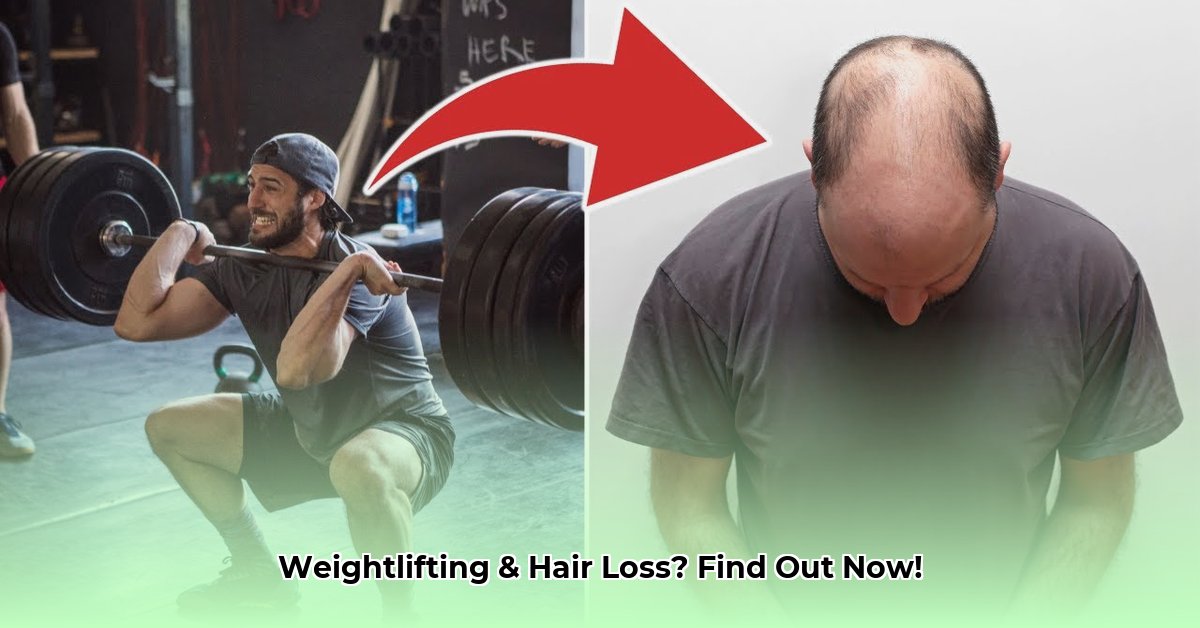
Does Weight Lifting Cause Hair Loss? The Complex Relationship Between Exercise and Hair Health
Let's address the common concern: Can weightlifting lead to hair loss? The short answer is: it's complicated. While there's no direct causal link in most cases, intense exercise, combined with other lifestyle factors, can sometimes contribute to temporary hair shedding. This nuanced relationship requires a comprehensive understanding of various contributing elements.
Understanding the Link Between Exercise and Hair
Intense physical activity, especially when coupled with poor nutrition, can sometimes induce a temporary condition called telogen effluvium (TE) (a temporary hair shedding phase). TE occurs when hair follicles enter a resting phase, resulting in increased hair fallout. This is typically reversible. However, moderate exercise generally benefits hair health by improving blood circulation to the scalp, delivering essential nutrients to hair follicles. Furthermore, regular physical activity plays an important role in stress management; chronic stress is a known contributor to hair loss. Thus, the impact of exercise on hair health is heavily dependent on intensity and overall lifestyle choices. Does this mean you should abandon your workout? Absolutely not!
Nutrition: The Foundation of Hair Health
The crucial link between weightlifting and potential hair loss often lies in nutrition. Severe calorie restriction, common in some fitness regimens, deprives hair follicles of essential nutrients, leading to thinning or breakage. Protein is vital for hair growth, while deficiencies in iron (particularly crucial for women) and other micronutrients can significantly weaken hair. This underscores the importance of a balanced diet, particularly when engaging in intense exercise.
Beyond the Gym: Other Contributing Factors
Numerous other factors can affect hair health, independent of weightlifting itself. These include:
- Sun Exposure: Prolonged UV exposure damages hair, causing dryness, brittleness, and breakage.
- Chlorine and Saltwater: These substances strip hair of moisture and natural oils, resulting in damage and potential loss.
- Genetics: Hereditary predisposition plays a significant role in hair loss patterns.
- Stress: High levels of chronic stress have a detrimental effect on the hair growth cycle.
These factors interact to influence the risk of hair loss, regardless of the individual's exercise routine.
Protecting Your Hair While Maintaining Your Fitness Goals
To maintain optimal hair health while engaging in weightlifting, consider these actionable steps:
- Prioritize Protein: Consume a diet rich in protein from sources like lean meats, fish, eggs, beans, and lentils.
- Hydrate Adequately: Drink plenty of water throughout the day to ensure optimal hydration.
- Balanced Exercise: Maintain a sustainable exercise plan that incorporates moderate-intensity workouts and adequate rest. Avoid extreme training regimens that may stress the body excessively.
- Sun Protection: Wear a hat to shield your scalp from excessive sun exposure.
- Post-Swim Rinse: Thoroughly rinse your hair after swimming to minimize chlorine or saltwater damage.
- Seek Professional Guidance: Consult a dermatologist or registered dietitian if you experience significant hair loss or thinning. A professional can help determine underlying causes and suggest appropriate interventions.
Assessing Your Personal Risk
Individual risk factors vary. A balanced assessment is crucial. Consider the following factors and their potential impact:
| Factor | Severity (1-5) | Likelihood (1-5) | Overall Risk (1-25) |
|---|---|---|---|
| Nutritional Deficiencies | 4 | 3 | 12 |
| Extreme Exercise Regimens | 3 | 2 | 6 |
| Excessive Sun Exposure | 3 | 4 | 12 |
| Chlorine/Saltwater Exposure | 2 | 3 | 6 |
| Genetic Predisposition | 5 | Variable (1-5) | Variable (5-25) |
Remember, this table serves as a general guideline. Your actual risk level is influenced by individual characteristics and lifestyle choices.
The Exercise-Hair Loss Connection: Separating Fact from Fiction
Does weightlifting directly cause hair loss? Generally, no. However, several factors associated with extreme training regimens can increase the risk of temporary hair shedding. The primary culprit is often TE, triggered by the stress of overtraining and nutritional deficiencies. This emphasizes the importance of sustainable fitness practices.
Minimizing Hair Loss Risk Through Exercise Modifications
The key to mitigating exercise-related hair loss isn't necessarily to avoid weight training, but to optimize your approach:
- Prioritize Recovery: Integrate rest days and adequate sleep into your training schedule.
- Moderate Intensity: Opt for moderate-intensity training sessions and avoid constant high-intensity workouts.
- Diverse Training: Incorporate varied exercise types to reduce physical strain on the body.
- Consult Experts: Seek guidance from a fitness professional and a registered dietitian to personalize your fitness and nutrition strategies.
The Bottom Line: A Holistic Approach
While intense exercise and poor nutrition can contribute to temporary hair shedding, moderate exercise and a balanced, nutritious diet are generally beneficial for hair health. This highlights the importance of maintaining a holistic approach to overall well-being to ensure both fitness goals and healthy hair are achieved. Remember that individual responses vary, and it's always best to consult with a healthcare professional if you have concerns about hair loss.